Culture Matters: London Society & Underworlds before Jack the Ripper
EIU 4114G, T & Th 3:30—4:45, Coleman Hall 3609, Newton Key & Jad Smith
Humanities Senior Seminar, Spring 2015; Syllabus as pdf (brief version)
The astonishing growth of London - virtually the largest city in Europe by 1700 - brought luxuries and benefits. London’s growth also brought vices and raised modern questions about morality, poverty, and order. How did Londoners identify and try to solve conspiracy, clubbing, gang, and crime problems then, and how might we use our expertise drawn from any major or discipline to use or revise their ideas about urban issues now? This humanities senior seminar introduces the intellectual, cultural, economic, and especially social development in this metropolis a century before Jack the Ripper and before a unified police force, with a particular emphasis on crime in the 1600s and 1700s. The course is inter- or cross-disciplinary both in the sources used - literary, legal, visual - and in the methods of analysis - literary, historical. (see also, requirements, papers, and exams)
Available from Textbook Services:
- Bucholz & Ward. Bucholz, Robert O. and Joseph P. Ward. London: A Social and Cultural History, 1550-1750. Cambridge: Cambridge University Press, 2012. [17.916]
- Damrosch et al. Sherman, Stuart, ed. The Longman Anthology of British Literature, Volume 1C: The Restoration and the Eighteenth Century. Gen eds. David Damrosch and Kevin J.H. Dettmar, 3rd ed. New York: Longman, 2006. [27.735]
- Defoe, Daniel. Moll Flanders. Ed. Edward Kelly. New York: WW Norton & Co, 1973. [23.080]
- Hitchcock. Hitchcock, Tim. Down and Out in Eighteenth-Century London. London: Continuum, 2007. [17.917]
- Additional readings (available as handouts or in EIU Online/Brightspace)
Unit I Mapping the Metropolis
“In a West end town a dead end world
The East end boys and West end girls.” (“West End Girls,” Pet Shop Boys)
How do we envision a city? How did pre-modern Londoners envision their city? How does the historian map London? How does literature map London?
John Collet, May Morning (1760)
week 1. Introducing London
- Jan. 13. Why study cities? criminals? the poor?
- Jan. 15. Bucholz & Ward, Intro. (“London’s Importance”)
Wenceslaus Hollar, Royal Exchange (1644)
week 2. Mapping London
- Jan. 20. Bucholz & Ward, chs. 1-2 (“London in 1550,” “The Socio-Economic Base”)
- Agas Map of London 1561 (1633 ed.)
- Map of Early Modern London (16th cent., Agas Map)
- James de la Feuille's map of London (1690, from Hollar's 'New Mapp' of 1675)
- William Morgan's map of the whole of London in 1682.
- Agas Map of London 1561 (1633 ed.)
- Jan. 22. Hitchcock, ch. 1 (“Streets of London”)
Claes Van Visscher, London panorama (1616, detail)
week 3. Visualizing London
- Jan. 27. Understanding Visual Culture (as assigned, see course site EIU Online)
- Jan. 29. Hitchcock, ch. 1 (“Streets of London”)
Old Bailey Sessions House (c. 1680, print from 1750)
Unit II The Drama of Urban Crime
How does law enforcement differ between the early 18th and the early 21st centuries? What specific issues do crime and the “dark figure” (criminals for which we have no record) have for the student of an early modern metropolis such as London? What does literature tell us? What does art?
William Hogarth, Morning (1738)
week 4. Visualizing Crime
- Feb. 3. Hogarth, in Damrosch et al. and elsewhere (as assigned), “Crime, Justice and Punishment: The Historical Background to the Proceedings of the Old Bailey”; Mapping London Project due
- Feb. 5. Gay, The Beggar's Opera (1728), in Damrosch et al. (as assigned)
William Hogarth, A Scene from The Beggar's Opera (1731)
- Feb. 10. Gay, The Beggar's Opera, in Damrosch et al, at least through end of Act I
- Feb. 12. Group presentations of Walking Tour/Description of region on Google Maps.
The Fortunate Transport (1741)
week 6. Private Vices, Public Benefits?
- Feb. 17. Gay, The Beggar's Opera, in Damrosch et al., at least through end of Act II
- Feb. 19. Bucholz and Ward, ch. 6 (pp. 244-67, "London Criminals" - “Trial & Sentence”); “Researching Crime”; Bernard Mandeville, "The Grumbling Hive" (1705)
William Hogarth, from Hudibras (1725/26)
week 7. Thieves and Thief-taking
- Feb. 24 The Beggar’s Opera and Its Time, in Damrosch et al., through end of Act III (all)
- Feb. 26. Introduction to Mapping Criminal Case Histories Project; “How to Read an Old Bailey Trial”
Jonathan Wild and angry Londoners on the way to his execution (1725)
week 8. Drama in the Long-18th Century
- March 3 “Crime, Justice and Punishment: The Historical Background to the Proceedings of the Old Bailey”
- 18th Century and Regency Thieves' Cant (1737, 1811)
- Dictionary of Cant and English Slang (1737, based on 1719, 1698 eds.)
- Google Ngram Viewer
- Oxford English Dictionary
- March 5. Mapping Criminal Case Histories Project & Prepare for Unit I & II quizzes: “How to Read an Old Bailey Trial”
Daniel Defoe in the pillory
Unit III – London Criminal and Poor Underworlds
Who are the people on the margins and where are they? Do they affect history or are they affected by it? Beyond the poor and the street, this section examines bawdy houses (and the bawdy house riots of 1668), molly houses, coffee-houses, and clubs.

gallows ticket (1725)
week 9. Being Poor in London
- March 10. Urban Crime Drama Project due (note change); Hitchcock, chs. 2-3; Bucholz & Ward, ch. 6
- March 12. Hitchcock, chs. 4-5
Cries of London (18th cent. playing cards)
week 10. Narrating the London Poor
- March 24. Charity, TBA
- March 26. Hitchcock, ch. 10
Charity girl and boy, Wall of St. John's School, Wapping (est. 1695)
week 11. Londoners and Non-Londoners
- March 31. Wycherley, The Country Wife (1675), Damrosch et al. (as assigned)
- April 2. Wycherley, The Country Wife (1675), Damrosch et al. (as assigned)
William Hogarth, Moll Hackabout arrives in London (1731/32)
week 12. London Drinking, London Commensality, London Crime
- April 7. TBA
- April 9. Women and Men, Manners and Marriage (newspapers, 1690s-1710s), in Damrosch et al. (as assigned)
Ned Ward, The CoffeeHous Mob (1710)
week 13. Gendered Spaces
- April 14, 16. Defoe, Moll Flanders (excerpt); Defoe, Roxana, in Damrosch et al. (as assigned)
William Hogarth, The Fellow 'Prentices at their Looms (1747)
Unit IV - Final Projects
Manner of Execution at Tyburn (17th century)
week 14. Past & Present; the Literary & the Historical
- April 21, 23. Readying Presentations (groups)
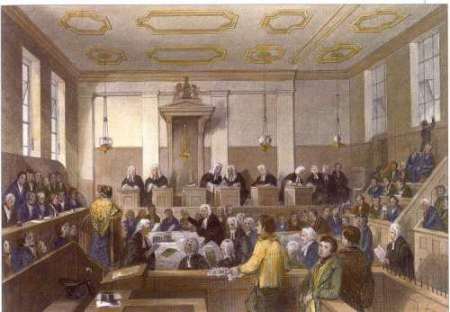
week 15. Getting Out the Word
- April 28, 30. Presentations
requirements, papers, and exams
office hours
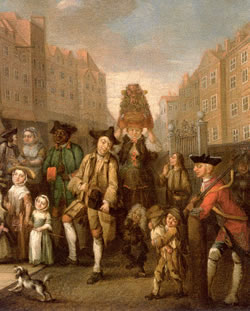
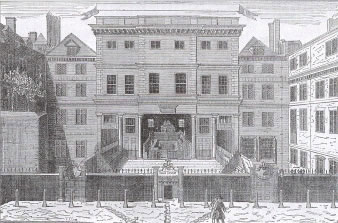
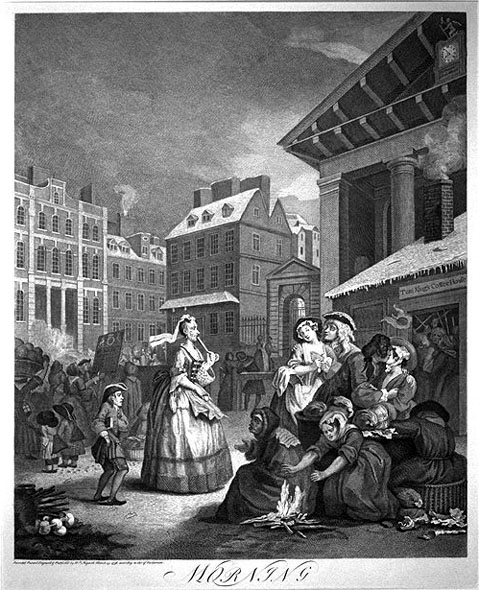
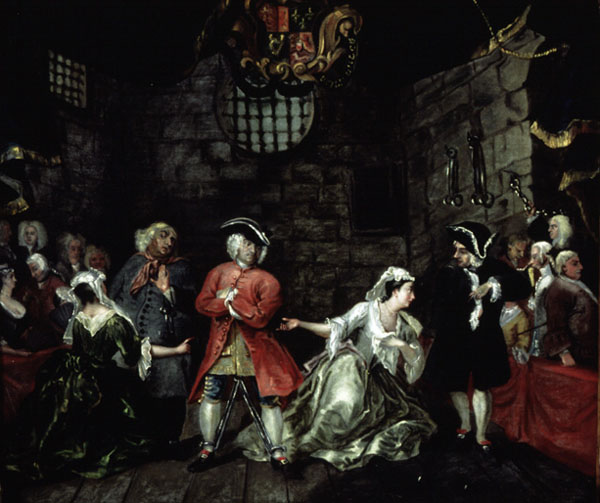



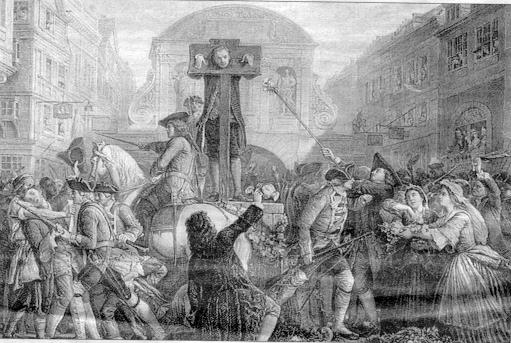
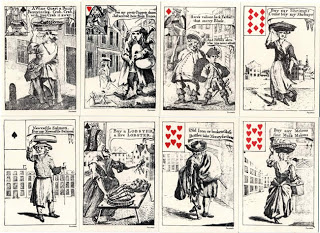

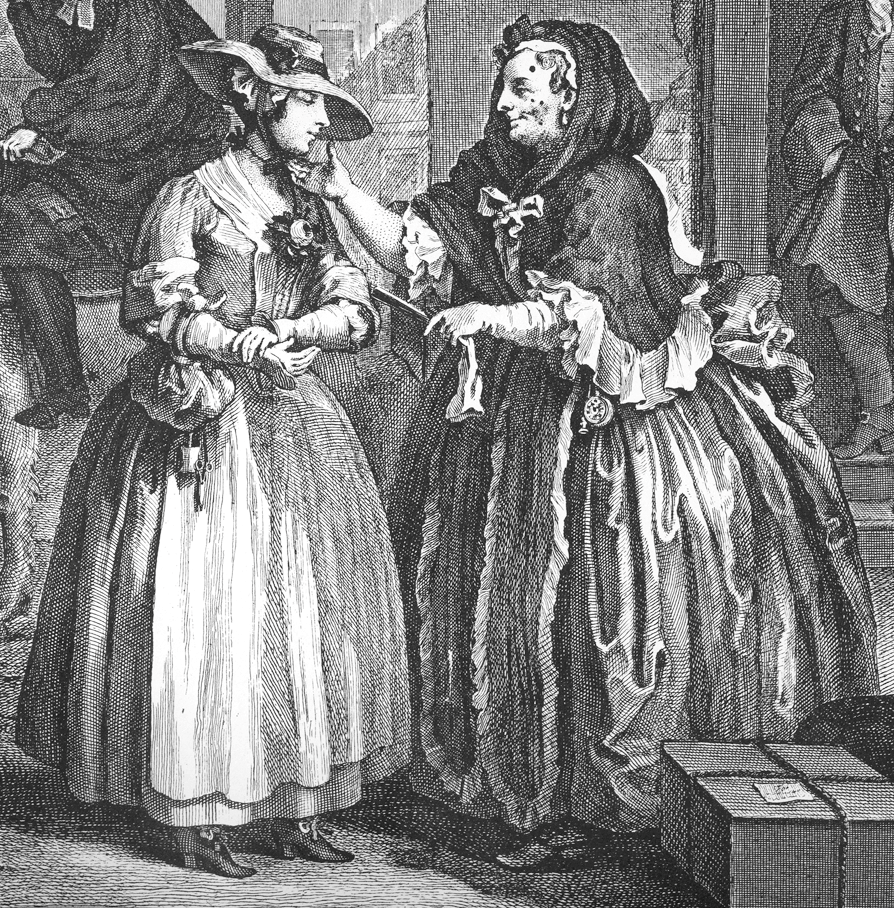
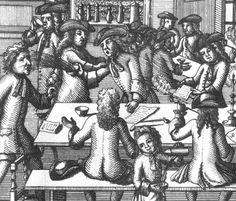
.jpg)
